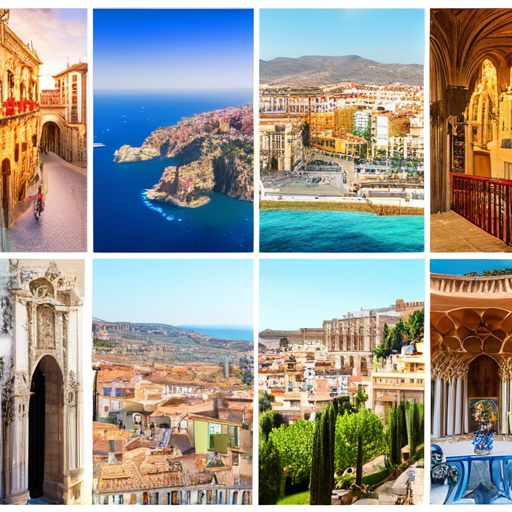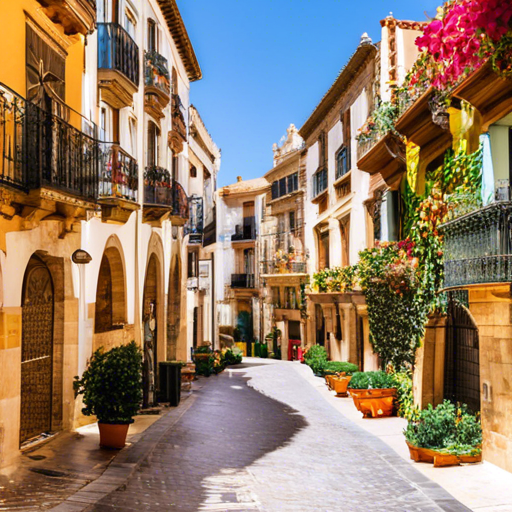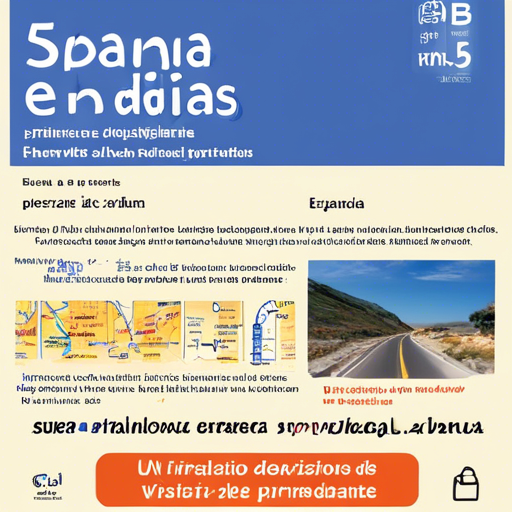 Discover the Ultimate 10-Day Travel Itinerary for Spain
Discover the Ultimate 10-Day Travel Itinerary for Spain
 Discover the Ultimate 10-Day Travel Itinerary for Spain
Discover the Ultimate 10-Day Travel Itinerary for Spain
 Exploring Spain: A Perfect 7-Day Travel Itinerary
Exploring Spain: A Perfect 7-Day Travel Itinerary
 The Best Two-Week Travel Itinerary for an Unforgettable Spanish Adventure
The Best Two-Week Travel Itinerary for an Unforgettable Spanish Adventure
 Spain in 5 Days: A Comprehensive Travel Itinerary for First-Time Visitors
Spain in 5 Days: A Comprehensive Travel Itinerary for First-Time Visitors
 Hidden Gems of Spain: A Unique 14-Day Travel Itinerary
Hidden Gems of Spain: A Unique 14-Day Travel Itinerary
Travel Itineraries
Welcome to our comprehensive guide on travel itineraries. Whether you are planning a short getaway or an extended vacation, having a well-structured itinerary can make all the difference. In this guide, we will explore various travel itineraries tailored to different interests and durations, ensuring that your trip is both enjoyable and efficient.
Why Plan a Travel Itinerary?
Planning a travel itinerary is crucial for maximizing your travel experience. It helps in organizing your time, managing your budget, and ensuring that you do not miss out on any must-see attractions. A well-thought-out itinerary can transform a chaotic trip into a seamless adventure.
Benefits of a Travel Itinerary
- Time Management: An itinerary helps you allocate time for each activity, ensuring that you make the most of your trip.
- Budget Control: By planning in advance, you can estimate costs and avoid overspending.
- Stress Reduction: Knowing what to expect each day reduces travel-related stress.
- Enhanced Experience: A well-planned itinerary ensures you visit all key attractions and engage in meaningful activities.
Types of Travel Itineraries
Travel itineraries can vary greatly depending on the type of trip you are planning. Below, we outline several types of itineraries to suit different travel preferences and durations.
Weekend Getaways
For those with limited time, a weekend getaway can be the perfect solution. These short trips require meticulous planning to ensure that every moment is utilized effectively.
Sample Weekend Itinerary
Consider a weekend trip to Barcelona:
- Day 1: Arrive in Barcelona, check into your hotel, and explore the Gothic Quarter. Visit the Picasso Museum and enjoy dinner at a local tapas bar.
- Day 2: Spend the morning at Park Güell, followed by a visit to the Sagrada Família. In the afternoon, relax at Barceloneta Beach and dine at a seaside restaurant.
- Day 3: Visit La Boqueria Market for breakfast, then head to Montjuïc for panoramic views of the city. Depart in the evening.
One-Week Vacations
A one-week vacation allows for a more in-depth exploration of a destination. This duration is ideal for balancing relaxation with sightseeing.
Sample One-Week Itinerary
Consider a week-long trip to Andalusia:
- Day 1: Arrive in Seville, check into your hotel, and explore the historic center. Visit the Seville Cathedral and Giralda Tower.
- Day 2: Spend the day at the Alcázar of Seville and stroll through the Maria Luisa Park. Enjoy a flamenco show in the evening.
- Day 3: Travel to Córdoba and visit the Mezquita. Explore the Jewish Quarter and dine at a traditional Andalusian restaurant.
- Day 4: Head to Granada and check into your hotel. Visit the Alhambra and Generalife Gardens.
- Day 5: Explore the Albaicín neighborhood and enjoy a traditional tea at a local tetería.
- Day 6: Travel to Málaga and visit the Picasso Museum. Relax at Malagueta Beach in the afternoon.
- Day 7: Spend your final day exploring the historic center of Málaga before departing.
Extended Trips
For those fortunate enough to have more time, extended trips offer the opportunity to immerse oneself in the culture and lifestyle of a destination. These itineraries often include multiple cities or regions.
Sample Extended Itinerary
Consider a two-week trip through Spain:
- Days 1-3: Begin in Madrid. Visit the Prado Museum, Retiro Park, and the Royal Palace. Enjoy a day trip to Toledo.
- Days 4-6: Travel to Valencia. Explore the City of Arts and Sciences, the historic center, and relax at Malvarrosa Beach.
- Days 7-9: Head to Barcelona. Visit key attractions such as the Sagrada Família, Park Güell, and the Gothic Quarter.
- Days 10-12: Travel to Seville. Explore the Alcázar, Seville Cathedral, and enjoy a flamenco show.
- Days 13-14: Conclude your trip in Granada. Visit the Alhambra, Generalife Gardens, and the Albaicín neighborhood.
Customizing Your Itinerary
While sample itineraries provide a solid foundation, customizing your itinerary to suit your interests and preferences is essential. Consider the following factors when tailoring your travel plans:
Interests and Preferences
Identify your primary interests, whether they are cultural, historical, culinary, or adventure-based. Tailor your itinerary to include activities and attractions that align with these interests. For example, if you are a history enthusiast, prioritize visits to museums, historical landmarks, and guided tours.
Travel Pace
Determine your preferred travel pace. Some travelers enjoy a packed schedule with minimal downtime, while others prefer a more relaxed approach with ample time for leisure and spontaneity. Adjust your itinerary accordingly to ensure a comfortable and enjoyable experience.
Seasonal Considerations
Take into account the time of year you will be traveling. Seasonal factors such as weather, festivals, and peak tourist seasons can significantly impact your itinerary. For instance, visiting Spain during the summer months may require planning for high temperatures and crowded attractions, while a winter trip might focus on indoor activities and holiday events.
Conclusion
In conclusion, a well-planned travel itinerary is an invaluable tool for any traveler. It ensures efficient time management, budget control, and a stress-free experience. By considering your interests, travel pace, and seasonal factors, you can create a customized itinerary that maximizes your enjoyment and minimizes potential challenges. Whether you are embarking on a weekend getaway, a one-week vacation, or an extended trip, thoughtful planning will enhance your travel experience and create lasting memories.
We hope this guide has provided you with valuable insights and inspiration for planning your next adventure. Bon voyage!
